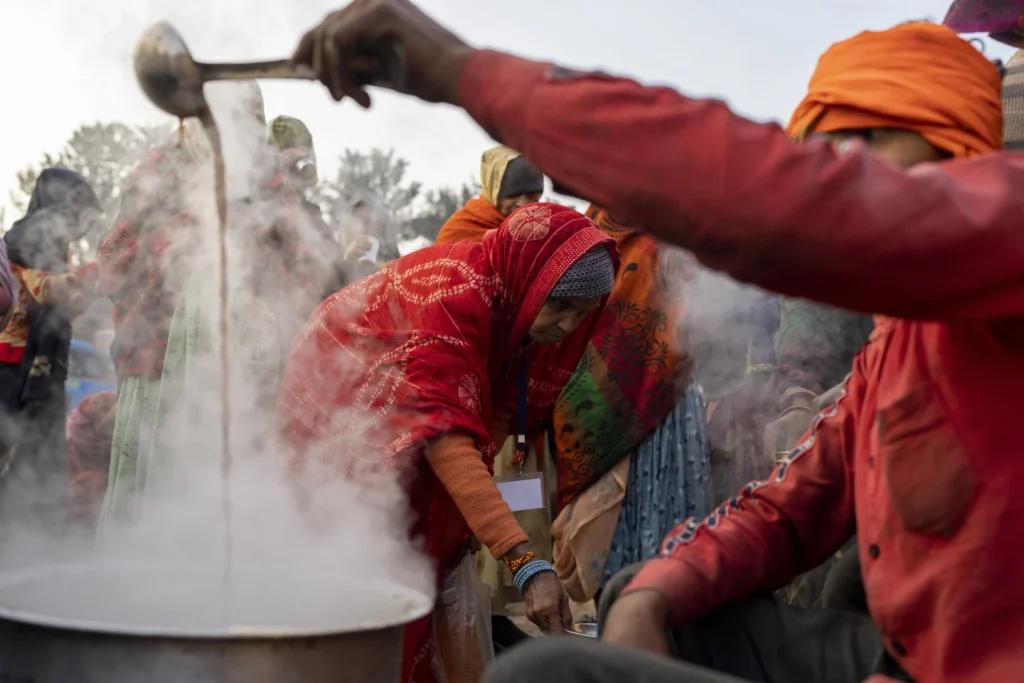The revered Pashupatinath temple in Kathmandu, Nepal, holds a special significance for thousands of Indian pilgrims who travel long distances to pay their respects to Lord Shiva, the powerful Hindu god of destruction.
The temple, situated on the banks of the Bagmati river, is a place of pilgrimage, prayer, and reflection for worshippers from both Nepal and India.
The arrival of Indian pilgrims at daybreak is a sight to behold, as they are greeted by hawkers offering hot tea to combat the cold wintry morning.
Many worshippers, in a gesture of love and respect, hand the cups of tea to their family members through the bus windows.
This simple act of sharing reflects the strong familial bonds and the spirit of togetherness that is integral to the pilgrimage experience.
Upon entering the temple, the devotees engage in a variety of religious activities, including reciting prayers, fasting, meditating, and seeking forgiveness.
The act of worship also involves praying before the “Shivalinga,” a sacred block of stone symbolizing the powerful deity.
It is a deeply spiritual and personal experience for each worshipper, as they seek the blessings and guidance of Lord Shiva.
The atmosphere around the temple is bustling with activity, as street vendors sell SIM cards, warm clothes, and holy beads to the pilgrims.
The scene is a vibrant mix of religious fervor and commercial enterprise, as the vendors cater to the needs of the worshippers who have traveled from afar to visit the sacred site.
The Pashupatinath temple, with its centuries-old history and stunning architecture, is a UNESCO World Heritage Site.
The pagoda-style roof and the intricately carved silver-plated doors depicting gods and goddesses add to the grandeur and spiritual aura of the temple.
It is a place where the divine meets the earthly, and where worshippers find solace and inspiration in the presence of Lord Shiva.
The pilgrimage to Pashupatinath holds great significance for both Nepal and India, the world’s two Hindu-majority nations.
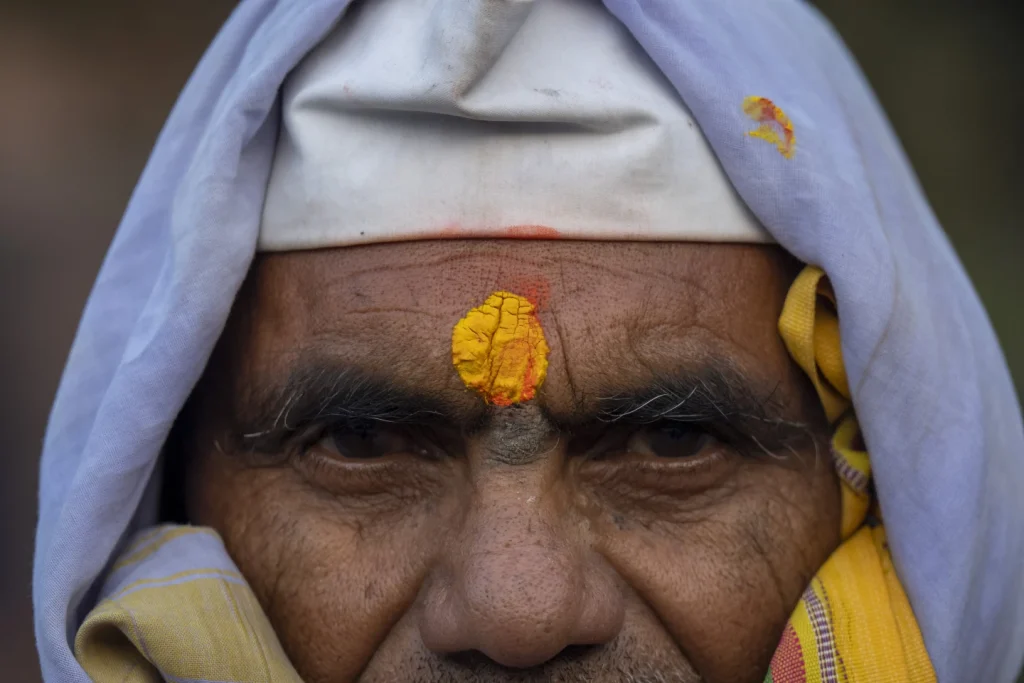
It is a testament to the strong religious affinity and cultural ties that bind the two countries. Every year, millions of Nepalese and Indians make the journey to Hindu shrines in both countries to pray for success, well-being, and the eternal peace of their loved ones.
It is a tradition that transcends borders and unites people in their shared faith and devotion.
In conclusion, the pilgrimage to Pashupatinath temple is a deeply spiritual and enriching experience for the thousands of Indian pilgrims who make the journey to Kathmandu.
It is a testament to the enduring power of faith and the timeless appeal of sacred sites that draw worshippers from far and wide.
The temple stands as a symbol of the unbreakable bond between Nepal and India, and the shared heritage of Hinduism that continues to inspire and uplift the hearts of millions.
In the heart of Nepal, nestled amidst the serene landscapes and ancient traditions, lies the sacred abode of Pashupatinath.
From mid-December through January, this hallowed site becomes a magnet for tens of thousands of devout pilgrims from India, drawn by the allure of seeking blessings and spiritual rejuvenation.
Among them are the toiling farmers who, at the culmination of the harvesting season, embark on a journey of faith and gratitude.
The influx of pilgrims, a vibrant tapestry of devotion and cultural diversity, unfolds each day, culminating in the grand spectacle of “Mahashivratri.”
This pivotal festival, which falls in the months of February and March, reverberates with the joyous commemoration of the divine union between Shiva and his beloved Parvati.
It is a time of fervent prayers, joyous celebrations, and the collective reverence for the sacred bond that transcends time and space.
India, a colossal nation teeming with 1.4 billion souls, is steeped in the profound significance of religion. For many Hindus, embarking on pilgrimages to ancient sanctuaries in Nepal is a revered tradition, a spiritual odyssey that transcends the mundane and connects them to the divine tapestry of existence.
Dinesh Patel, a venerable Indian travel agent whose endeavors revolve around orchestrating transformative journeys to Nepal, sheds light on the ardent dedication of the pilgrims.
Many of these devout souls, driven by an unyielding faith, traverse the sacred terrain, finding solace and spiritual communion.
Their sojourn is not merely a physical passage but a profound inner journey, navigating through the corridors of devotion and transcendence.
Amidst this spiritual caravan is Kamalesh Verma, a 31-year-old devotee hailing from the eastern Chhattisgarh state of India.
His pilgrimage to Pashupatinath temple epitomizes the convergence of hope, uncertainty, and unwavering faith. In his poignant words, “
This is the first time I’m here at Pashupatinath temple, but I don’t know if it’s God’s will that I will return to receive his blessings.”

These sentiments encapsulate the essence of pilgrimage—an odyssey of faith, where the unknown intertwines with the profound yearning for divine grace.
The pilgrimage is not merely a physical undertaking; it is a profound spiritual journey that transcends the boundaries of time and space.
The pilgrims, driven by an unshakeable faith, find themselves immersed in the sacred aura of Pashupatinath, where the ethereal and the earthly converge in a harmonious symphony of devotion and transcendence.
The significance of Pashupatinath extends beyond the temporal realm, weaving a tapestry of spiritual resonance that resonates across borders and cultures.
The pilgrims, through their ardent devotion and unwavering faith, become the torchbearers of an ancient tradition, illuminating the path for generations to come.
As the sun sets on the sacred precincts of Pashupatinath, it leaves behind an indelible imprint on the hearts and souls of the pilgrims.
Their pilgrimage, a testament to the enduring power of faith, serves as a poignant reminder of the timeless bond between humanity and the divine.
In conclusion, the pilgrimage to Pashupatinath stands as a testament to the enduring power of faith, the timeless allure of ancient traditions, and the unyielding spirit of devotion.
It is a spiritual odyssey that transcends the mundane, weaving a tapestry of reverence, hope, and transcendence.
Through their pilgrimage, the devotees become the custodians of an ancient legacy, carrying forward the light of faith and spirituality into the boundless expanse of the future.
In the heart of Nepal, nestled amidst the serene landscapes and ancient traditions, lies the sacred abode of Pashupatinath.
From mid-December through January, this hallowed site becomes a magnet for tens of thousands of devout pilgrims from India, drawn by the allure of seeking blessings and spiritual rejuvenation.
Among them are the toiling farmers who, at the culmination of the harvesting season, embark on a journey of faith and gratitude.
The influx of pilgrims, a vibrant tapestry of devotion and cultural diversity, unfolds each day, culminating in the grand spectacle of “Mahashivratri.”
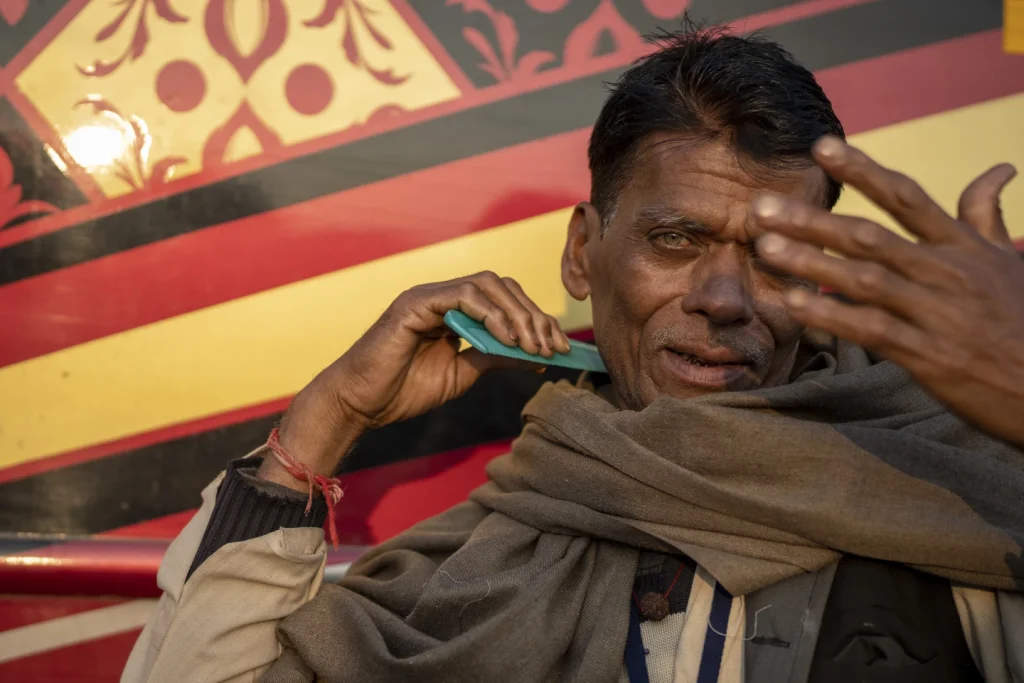
This pivotal festival, which falls in the months of February and March, reverberates with the joyous commemoration of the divine union between Shiva and his beloved Parvati.
It is a time of fervent prayers, joyous celebrations, and the collective reverence for the sacred bond that transcends time and space.
India, a colossal nation teeming with 1.4 billion souls, is steeped in the profound significance of religion. For many Hindus, embarking on pilgrimages to ancient sanctuaries in Nepal is a revered tradition, a spiritual odyssey that transcends the mundane and connects them to the divine tapestry of existence.
Dinesh Patel, a venerable Indian travel agent whose endeavors revolve around orchestrating transformative journeys to Nepal, sheds light on the ardent dedication of the pilgrims.
Many of these devout souls, driven by an unyielding faith, traverse the sacred terrain, finding solace and spiritual communion.
Their sojourn is not merely a physical passage but a profound inner journey, navigating through the corridors of devotion and transcendence.
Amidst this spiritual caravan is Kamalesh Verma, a 31-year-old devotee hailing from the eastern Chhattisgarh state of India.
His pilgrimage to Pashupatinath temple epitomizes the convergence of hope, uncertainty, and unwavering faith. In his poignant words, “
This is the first time I’m here at Pashupatinath temple, but I don’t know if it’s God’s will that I will return to receive his blessings.”
These sentiments encapsulate the essence of pilgrimage—an odyssey of faith, where the unknown intertwines with the profound yearning for divine grace.
The pilgrimage is not merely a physical undertaking; it is a profound spiritual journey that transcends the boundaries of time and space.
The pilgrims, driven by an unshakeable faith, find themselves immersed in the sacred aura of Pashupatinath, where the ethereal and the earthly converge in a harmonious symphony of devotion and transcendence.
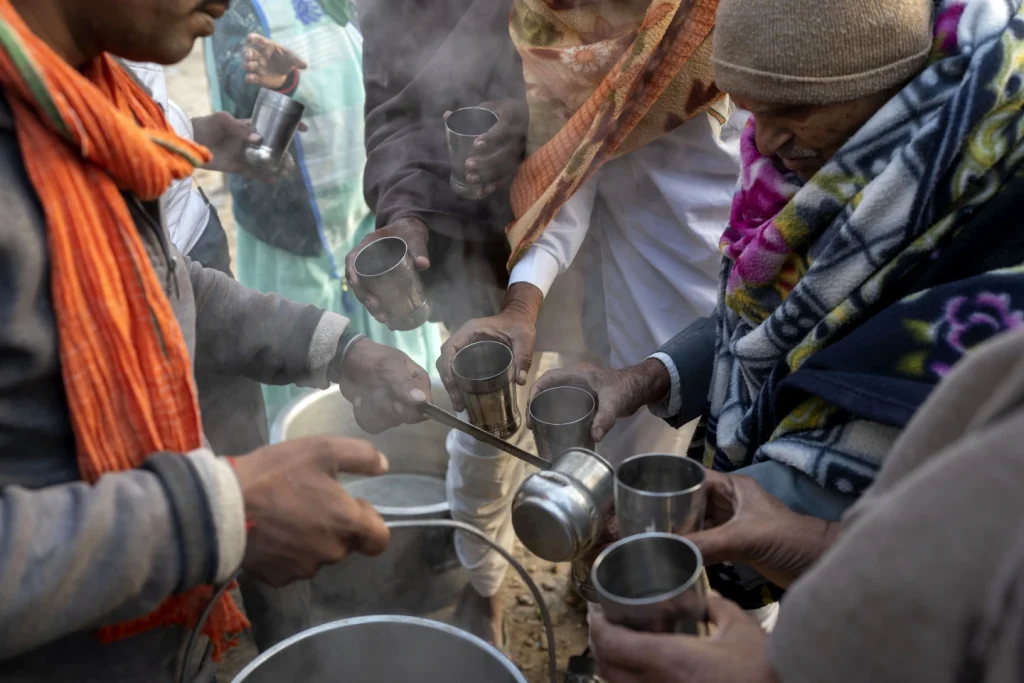
The significance of Pashupatinath extends beyond the temporal realm, weaving a tapestry of spiritual resonance that resonates across borders and cultures.
The pilgrims, through their ardent devotion and unwavering faith, become the torchbearers of an ancient tradition, illuminating the path for generations to come.
As the sun sets on the sacred precincts of Pashupatinath, it leaves behind an indelible imprint on the hearts and souls of the pilgrims.
Their pilgrimage, a testament to the enduring power of faith, serves as a poignant reminder of the timeless bond between humanity and the divine.
In conclusion, the pilgrimage to Pashupatinath stands as a testament to the enduring power of faith, the timeless allure of ancient traditions, and the unyielding spirit of devotion.
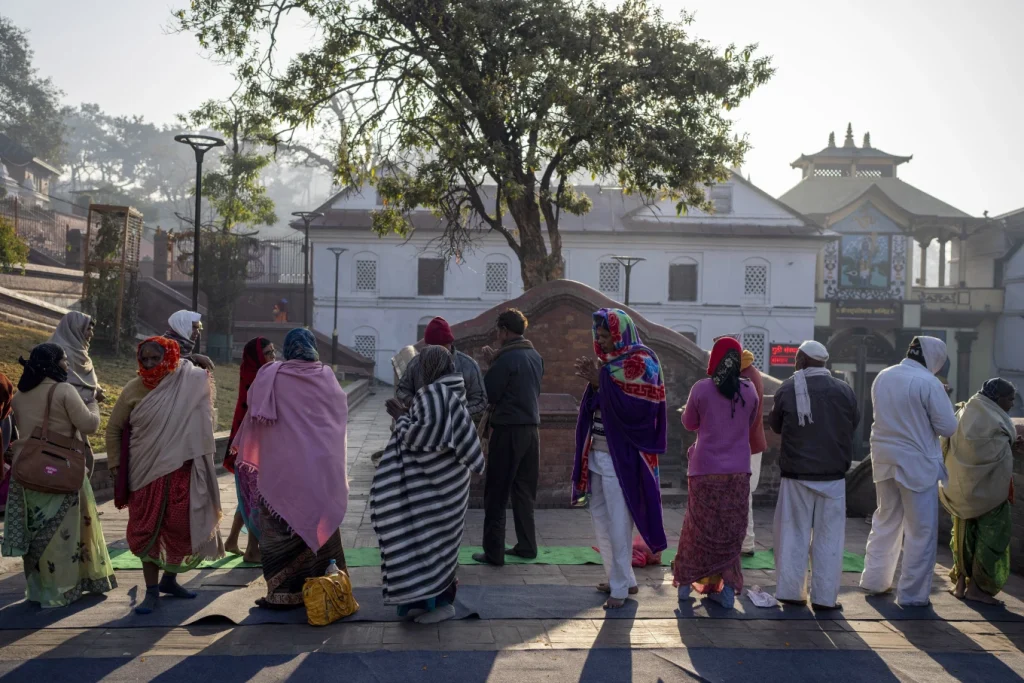
It is a spiritual odyssey that transcends the mundane, weaving a tapestry of reverence, hope, and transcendence.
Through their pilgrimage, the devotees become the custodians of an ancient legacy, carrying forward the light of faith and spirituality into the boundless expanse of the future.
